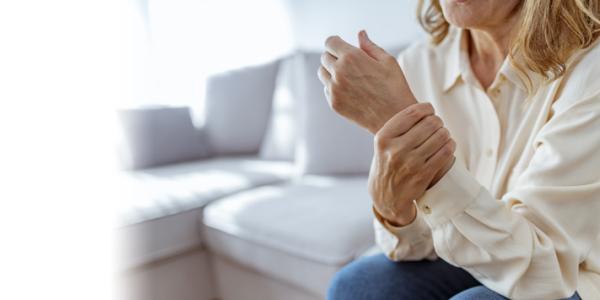


If you have ever twisted your ankle or cut your hand, you have experienced inflammation. Inflammation is your body’s natural response to injury or infection — a defense mechanism that triggers your immune system to begin the healing process. However, sometimes inflammation can last well after your ankle feels better or your cut is healed, and the lingering symptoms can cause additional health concerns.
There are two types of inflammation: acute, meaning it’s brought on quickly and is usually short-lived, or chronic, which can persist for months or even years if your immune system fails to fix the initial problem. When your body is injured, your immune system typically acts quickly to repair the injury, causing acute inflammation symptoms to dissipate. However, if signs of inflammation — such as pain, redness, swelling and heat around the injury site — remain long after you have recovered from the initial injury or infection, you may be dealing with chronic inflammation.
Over time, chronic inflammation can trigger your immune system to attack healthy tissue and organs in your body. When left untreated, prolonged chronic inflammation can increase your risk for diseases like diabetes, heart disease, cancer and rheumatoid arthritis. Since inflammation signs and symptoms often go undetected, it's important to have regular doctors visits and inform your physician if you are experiencing signs of possible inflammation.
Acute inflammation can often be treated with nonsteroidal anti-inflammatory drugs — or NSAIDS — such as aspirin and ibuprofen. These drugs can alleviate short-term pain caused by acute inflammation, but should not be used long-term. Alternately, chronic inflammation is typically treated with corticosteroids like cortisol, which can be prescribed by your doctor. Corticosteroids come in the form of creams, ointments, tablets or injections and should be taken routinely — for weeks or sometimes months — until symptoms lessen or subside.
Your risk of chronic inflammation is associated with a variety of health factors like diet, lifestyle and family history. Knowing these factors can help you make proactive lifestyle changes to avoid, reduce or even reverse inflammation in your body. Consider which of these lifestyle tips you can implement in your own life to reduce or avoid chronic inflammation:
The first step to addressing inflammation is practicing a healthy lifestyle by eating a healthful diet and staying active. These lifestyle modifications are the best approach to reducing your risk of inflammation and initiating the reversal process. If you are concerned about your risk of inflammation or think you may already be experiencing symptoms of chronic inflammation, talk to your doctor about blood tests to determine inflammatory markers, as well as ways to reduce inflammation.
This article first appeared in the May 2020 edition of the HealthPerks newsletter.

Identify your risk factors and what to do if you are at risk.